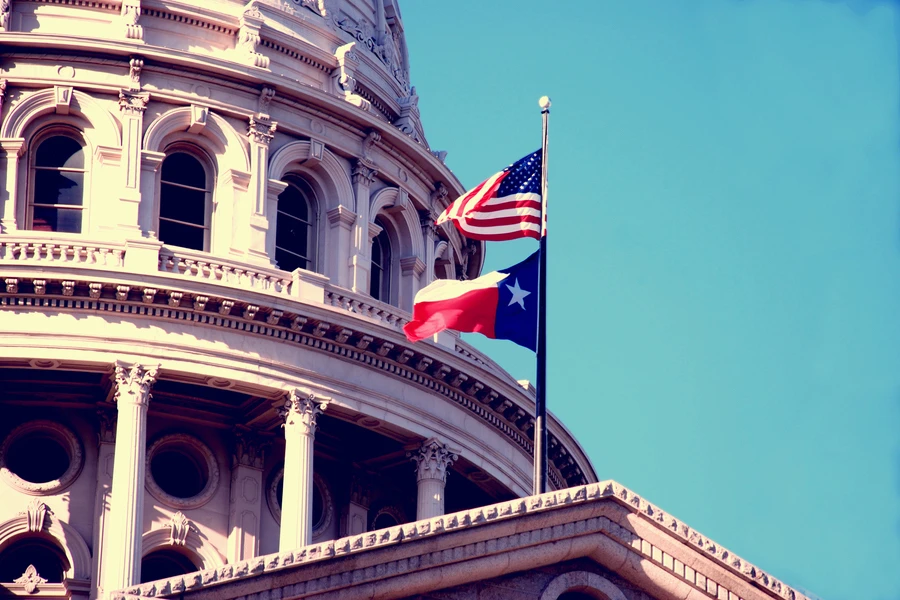
Denver, Colo., Dec 6, 2018 / 06:01 pm (CNA).- During Wednesday’s funeral for George H.W. Bush, US President Donald Trump made headlines when he did not recite the Apostles’ Creed. Supporters and critics of the president speculated on what his omission might have meant.
But the occasion raises another important question: What is the Apostles’ Creed, and what does it mean?
The Apostles’ Creed is a developed expression of the faith handed down by the apostles, which originated in Rome and is used by the Catholic Church and the ecclesial communities of the West.
The creed took shape in the second or third century in connection with baptism, Cardinal Joseph Ratzinger, later Benedict XVI, wrote in his 1968 work Introduction to Christianity.
Catechumens in those centuries were asked successively if they believed in each of the three persons of the Trinity, responding, “I believe”.
“Thus the oldest form of the confession of faith takes the shape of a tripartite dialogue, of question and answer, and is, moreover, embedded in the ceremony of baptism,” Ratzinger wrote.
The middle section of the creed, concerning God the Son, was expanded in the second, or, probably, third century, and it was in the fourth century that a continuous text, detached from the question and answer format, began to emerge.
The text of the Apostles’ Creed was finalized in Gaul during the ecclesiastical reforms of Charlemagne in the ninth century. That text was received in Rome, and the creed has been used in the same form ever since.
Ratzinger noted that the Apostles’ Creed is focused on salvation history and Christology, and is rooted in the ecclesiastical form of faith: that “faith demands unity and calls for the fellow believer; it is by nature related to a Church.”
The creed was treated by the early Church as a kind of symbolum, a tradition whereby a ring, staff, or tablet would be broken in half, and the corresponding halves used as identification for guests, messengers, or treater partners.
“Possession of the corresponding piece entitled the holder to receive a thing or simply to hospitality. A symbolum is something which points to its complementary other half and thus creates mutual recognition and unity. It is the expression and means of unity,” according to Ratzinger.
“In the description of the creed or profession of faith as the symbolum we have at the same time a profound interpretation of its true nature. For in fact this is just what the original meaning or aim of dogmatic formulations in the Church was: to facilitate a common profession of faith in God, common worship of him.”
The Apostles’ Creed’s connection to a dialogue between the Church and a catechumen during the ceremony of baptism is thus reflective of the communal nature of faith, which arises in the Church.
It also demonstrates that it is in worship that doctrine “assumes its proper place,” Ratzinger wrote, and that the Church “belongs necessarily to a faith whose significance lies in the interplay of common confession and worship.”
According to the Pope emeritus, the Church herself “holds the faith only as a symbolum … which signifies truth only in its endless reference to something beyond itself, to the quite other.”
This profession of faith was called the Apostles’ Creed at least as early as 390, when a council headed by St. Ambrose used the term in a letter to St. Siricius.
A legend holds that it is known as the Apostles’ Creed because it includes 12 articles, each of which was contributed by an apostle before their dispersal.
This legend “has the disadvantage of calling attention to a division … into twelve articles,” Henri de Lubac wrote in The Christian Faith, “whereas the structure of the Creed is tripartite because Christian faith is essentially faith in the indivisible Trinity.”
Moreover, this legend was discredited when at the Council of Florence in the 15th century, the Latins were surprised to find that the Greeks did not use the Apostles’ Creed.
The Apostles’ Creed has not been received by the Eastern Orthodox because it was not a subject of the first seven ecumenical councils; their sole profession of faith is the Nicene Creed. This has led at least a few journalists to wonder if perhaps Trump is seeking admission to an Eastern Church.
The Apostles’ Creed was used liturgically in the Latin rite of the Church until 1955. Prior to that year’s reform of the general calendar and the rubrics of the Roman Breviary, it was recited at the beginning of Matins and Prime, at the end of Compline, and during the preces of Prime and Compline during certain seasons.
If you value the news and views Catholic World Report provides, please consider donating to support our efforts. Your contribution will help us continue to make CWR available to all readers worldwide for free, without a subscription. Thank you for your generosity!
Click here for more information on donating to CWR. Click here to sign up for our newsletter.






Leave a Reply